Gerolamo Cardano
description: Italian Renaissance mathematician, physician, astrologer (1501-1576)
17 results

The Drunkard's Walk: How Randomness Rules Our Lives
by
Leonard Mlodinow
Published 12 May 2008
You don’t need calculus, geometry, algebra, or even amphetamines, which Erdös was reportedly fond of taking.8 (As legend has it, once after quitting for a month, he remarked, “Before, when I looked at a piece of blank paper my mind was filled with ideas. Now all I see is a blank piece of paper.”) All you need is a basic understanding of how probability works and the law of the sample space, that framework for analyzing chance situations that was first put on paper in the sixteenth century by Gerolamo Cardano. GEROLAMO CARDANO was no rebel breaking forth from the intellectual milieu of sixteenth-century Europe. To Cardano a dog’s howl portended the death of a loved one, and a few ravens croaking on the roof meant a grave illness was on its way. He believed as much as anyone else in fate, in luck, and in seeing your future in the alignment of planets and stars.
…
The old man died on September 20, a few days shy of his seventy-fifth birthday. He had outlived two of his three children; at his death his surviving son was employed by the Inquisition as a professional torturer. That plum job was a reward for having given evidence against his father. Before his death, Gerolamo Cardano burned 170 unpublished manuscripts.1 Those sifting through his possessions found 111 that survived. One, written decades earlier and, from the looks of it, often revised, was a treatise of thirty-two short chapters. Titled The Book on Games of Chance, it was the first book ever written on the theory of randomness.
…
Cardano’s work also transcended the primitive state of mathematics in his day, for algebra and even arithmetic were yet in their stone age in the early sixteenth century, preceding even the invention of the equal sign. History has much to say about Cardano, based on both his autobiography and the writings of some of his contemporaries. Some of the writings are contradictory, but one thing is certain: born in 1501, Gerolamo Cardano was not a child you’d have put your money on. His mother, Chiara, despised children, though—or perhaps because—she already had three boys. Short, stout, hot tempered, and promiscuous, she prepared a kind of sixteenth-century morning-after pill when she became pregnant with Gerolamo—a brew of wormwood, burned barleycorn, and tamarisk root.

Human Compatible: Artificial Intelligence and the Problem of Control
by
Stuart Russell
Published 7 Oct 2019
The difference between this harebrained house-buying plan and my sober and sensible airport plan is, however, just a matter of degree. Both are gambles, but one seems more rational than the other. It turns out that gambling played a central role in generalizing Aristotle’s proposal to account for uncertainty. In the 1560s, the Italian mathematician Gerolamo Cardano developed the first mathematically precise theory of probability—using dice games as his main example. (Unfortunately, his work was not published until 1663.13) In the seventeenth century, French thinkers including Antoine Arnauld and Blaise Pascal began—for assuredly mathematical reasons—to study the question of rational decisions in gambling.14 Consider the following two bets: A: 20 percent chance of winning $10 B: 5 percent chance of winning $100 The proposal the mathematicians came up with is probably the same one you would come up with: compare the expected values of the bets, which means the average amount you would expect to get from each bet.
…
The quotation is taken from Aristotle, Nicomachean Ethics, Book III, 3, 1112b. 13. Cardano, one of the first European mathematicians to consider negative numbers, developed an early mathematical treatment of probability in games. He died in 1576, eighty-seven years before his work appeared in print: Gerolamo Cardano, Liber de ludo aleae (Lyons, 1663). 14. Arnauld’s work, initially published anonymously, is often called The Port-Royal Logic: Antoine Arnauld, La logique, ou l’art de penser (Chez Charles Savreux, 1662). See also Blaise Pascal, Pensées (Chez Guillaume Desprez, 1670). 15. The concept of utility: Daniel Bernoulli, “Specimen theoriae novae de mensura sortis,” Proceedings of the St.
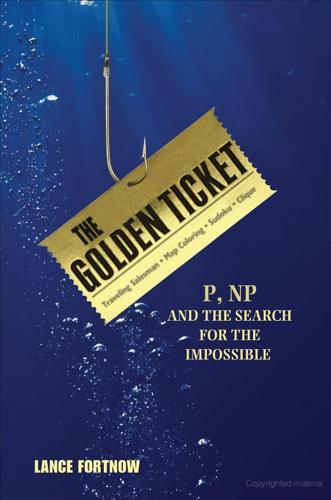
The Golden Ticket: P, NP, and the Search for the Impossible
by
Lance Fortnow
Published 30 Mar 2013
How do you get your $1 million check from the Clay Mathematics Institute? Slow down. You almost surely don’t have a proof. Realize why your proof doesn’t work, and you will have obtained enlightenment. Let me mention a few of the common mistakes people make when thinking they have a proof. Perhaps the first bad P ≠ NP proof goes back to 1550 and the writings of Gerolamo Cardano, an Italian mathematician considered one of the founders of the field of probability. Cardano, in creating a new cryptographic system, argued for the security of his system because there were too many keys to check them all. But his system was easily broken. You don’t have to check all the keys when doing cryptanalysis on secret messages.

Whiplash: How to Survive Our Faster Future
by
Joi Ito
and
Jeff Howe
Published 6 Dec 2016
Alberti was far from the only Renaissance scholar fascinated by cryptography—the growing sophistication of European mathematics; the search for hidden patterns in nature, which might illuminate religious mysteries or reveal secret knowledge; the unprecedented spread of information enabled by the printing press; and the tangled diplomatic environment of Renaissance Europe all provided fertile ground for the development of ever more complex methods of cryptography and cryptanalysis. In the sixteenth century, Johannes Trithemius and Giovan Battista Bellasso created their own polyalphabetic ciphers, while Gerolamo Cardano and Blaise de Vigenère pioneered autokey ciphers, in which the message itself is incorporated into the key.29 All of these cryptographic innovations were matched by innovations in cryptanalysis—a Renaissance version of the same escalation that drives advances in both cybersecurity and cyber attacks today.
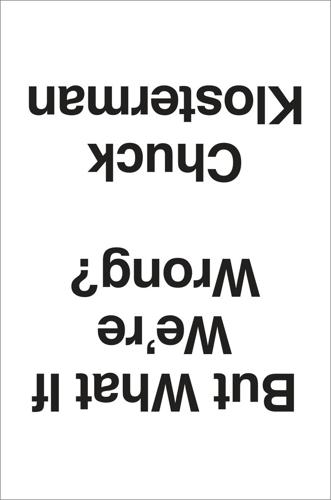
But What if We're Wrong? Thinking About the Present as if It Were the Past
by
Chuck Klosterman
Published 6 Jun 2016
He knows a great deal about probability theory,35 so I asked him if our contemporary understanding of probability is still evolving and if the way people understood probability three hundred years ago has any relationship to how we will gauge probability three hundred years from today. His response: “What we think about probability in 2016 is what we thought in 1716, for sure . . . probably in 1616, for the most part . . . and probably what [Renaissance mathematician and degenerate gambler Gerolamo] Cardano thought in 1564. I know this sounds arrogant, but what we’ve believed about probability since 1785 is still what we’ll believe about probability in 2516.” If we base any line of reasoning around consistent numeric values, there is no way to be wrong, unless we are (somehow) wrong about the very nature of the numbers themselves.

The Perfect Bet: How Science and Math Are Taking the Luck Out of Gambling
by
Adam Kucharski
Published 23 Feb 2016
The calculations have a flaw only when they meet reality. On paper, the martingale seems to work fine; in practical terms, it’s hopeless. When it comes to gambling, understanding the theory behind a game can make all the difference. But what if that theory hasn’t been invented yet? During the Renaissance, Gerolamo Cardano was an avid gambler. Having frittered away his inheritance, he decided to make his fortune by betting. For Cardano, this meant measuring how likely random events were. Probability as we know it did not exist in Cardano’s era. There were no laws about chance events, no rules about how likely something was.
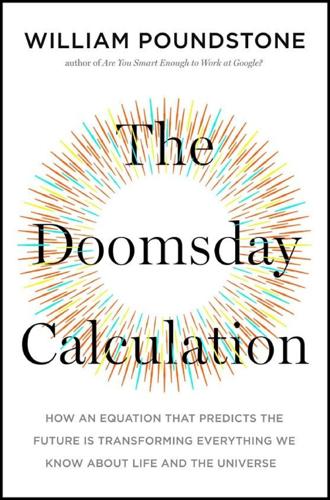
The Doomsday Calculation: How an Equation That Predicts the Future Is Transforming Everything We Know About Life and the Universe
by
William Poundstone
Published 3 Jun 2019
But there is no mention of Hume or miracles in Bayes’s one influential work, the one describing his theorem: An Essay Towards Solving a Problem in the Doctrine of Chances. Nor do we know for certain when the Essay was written. Richard Price discovered it after Bayes’s death, filed among papers of the late 1740s. Bayes’s Theorem The theory of probability began at the gambling table. Gerolamo Cardano was the ultimate Renaissance man—a philosopher, mathematician, physicist, astronomer, astrologer, inventor, chemist, biologist, and fashionable physician. He was also a compulsive gambler who by his admission bet daily for twenty-five years. Cardano’s short treatise on probability was an attempt to understand how so much money had slipped through his fingers.
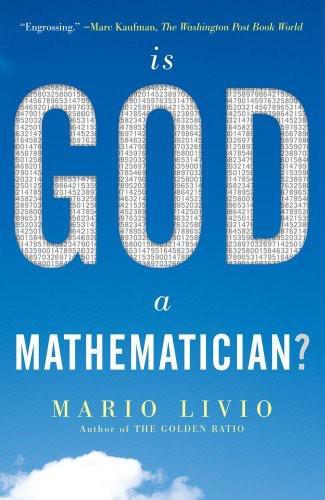
Is God a Mathematician?
by
Mario Livio
Published 6 Jan 2009
In fact, the feeling that the book of nature was written in the language of mathematics was so deeply rooted that many mathematicians absolutely refused even to consider mathematical concepts and structures that were not directly related to the physical world. This was the case, for instance, with the colorful Gerolamo Cardano (1501–76). Cardano was an accomplished mathematician, renowned physician, and compulsive gambler. In 1545 he published one of the most influential books in the history of algebra—the Ars Magna (The Great Art). In this comprehensive treatise Cardano explored in great detail solutions to algebraic equations, from the simple quadratic equation (in which the unknown appears to the second power: x2) to pioneering solutions to the cubic (involving x3), and quartic (involving x4) equations.
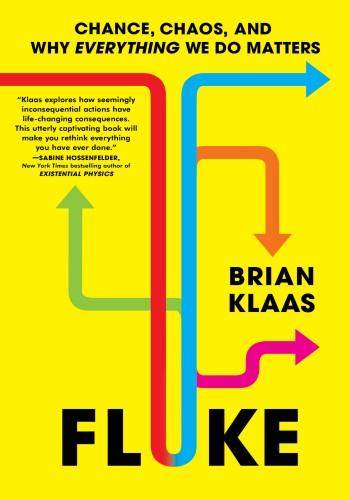
Fluke: Chance, Chaos, and Why Everything We Do Matters
by
Brian Klaas
Published 23 Jan 2024
Most notably, in 1654, Blaise Pascal and Pierre de Fermat proposed a solution to what is known as an interrupted game, in which two players start playing a game, but are forced to stop for some reason before either player has won. Before Pascal and Fermat, how to split the pot based on who was mathematically most likely to win was not clear-cut. In solving that conundrum, they unleashed rapid advancements in the nascent field of probability, bolstered by titans such as Gerolamo Cardano, the Chevalier de Méré, Jacob Bernoulli, Pierre-Simon Laplace (of Laplace’s demon), and Thomas Bayes (who developed what we now call Bayesian inference or Bayesian statistics). As the mathematical tools grew, a greater proportion of the world could be understood and calculated. Soon, a craze swept the intellectuals of European high society: to count everything.
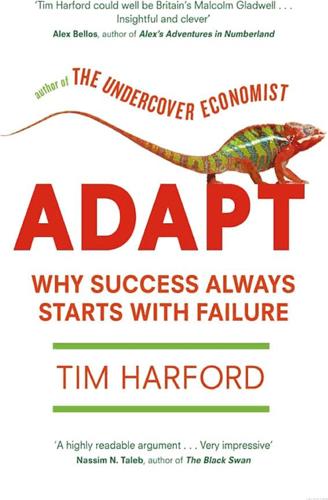
Adapt: Why Success Always Starts With Failure
by
Tim Harford
Published 1 Jun 2011
Most original ideas turn out either to be not original after all, or original for the very good reason that they are useless. And when an original idea does work, the returns can be too high to be sensibly measured. The Spitfire is one of countless examples of these unlikely ideas, which range from the sublime (the mathematician and gambler Gerolamo Cardano first explored the idea of ‘imaginary numbers’ in 1545; these apparently useless curiosities later turned out to be essential for developing radio, television and computing) to the ridiculous (in 1928, Alexander Fleming didn’t keep his laboratory clean, and ended up discovering the world’s first antibiotic in a contaminated Petri dish).

The Physics of Wall Street: A Brief History of Predicting the Unpredictable
by
James Owen Weatherall
Published 2 Jan 2013
But Samuelson did find something else by Bachelier that piqued his interest: Bachelier’s dissertation, published under the title A Theory of Speculation. He checked it out of the library and brought it back to his office. Bachelier was not, of course, the first person to take a mathematical interest in games of chance. That distinction goes to the Italian Renaissance man Gerolamo Cardano. Born in Milan around the turn of the sixteenth century, Cardano was the most accomplished physician of his day, with popes and kings clamoring for his medical advice. He authored hundreds of essays on topics ranging from medicine to mathematics to mysticism. But his real passion was gambling.
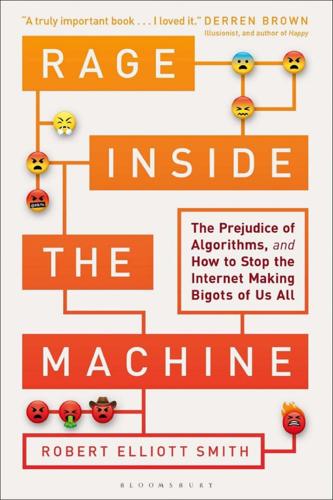
Rage Inside the Machine: The Prejudice of Algorithms, and How to Stop the Internet Making Bigots of Us All
by
Robert Elliott Smith
Published 26 Jun 2019
Although people still played the astragalus in the streets of Milan, Pavia and Bologna, Italy’s big university towns, new games of chance and business opportunities were tempting Renaissance men to try their luck at taming the goddess Fortuna. One such man was mathematician, scientist, philosopher and physician Gerolamo Cardano,6 who was born in Pavia in 1501. Gerolamo was one of the greatest intellectuals of Renaissance Italy, but from the outset the Fates dealt him a difficult hand, and despite his many talents and achievements his life was beset by unfortunate circumstances beyond his control. He was the bastard son to a mathematician friend of Leonardo da Vinci, Fazio Cardano, who held a chair of mathematics at Pavia University, one of the oldest institutions of higher learning in the world.

Antwerp: The Glory Years
by
Michael Pye
Published 4 Aug 2021
This matters because it finally appeared only in 1573, twelve years after Bandello’s death, from Alessandro Marsili, a Lyons printer who at least could not be accused of heresy since he was trying to get himself a cash reward for having a Protestant beheaded during religious riots.7 Marsili included a preface supposedly by Bandello to his ‘honest’ readers, which makes the dead man sound defensive. He writes that there was no point in any censoring, because the story was far too well known all over Europe, and in any case he would not be the first to put it in print; the ‘most learnèd Cardano, in his admirable De subtilitate rerum, mentions such a notorious case’.8 Gerolamo Cardano was in Padua, and his encyclopedic De subtilitate first appeared in 1552, which would show the story moving briskly on the trade runs out of Antwerp and towards Northern Italy. But Bandello, or his publisher, didn’t get the right book. Cardano was fascinated by technology and he put the trap chair into his De rerum varietate of 1557, under ‘concealed weapons’ and filed between ‘glass’ and ‘sailing aids’ with some sensational details which are remarkably exact.
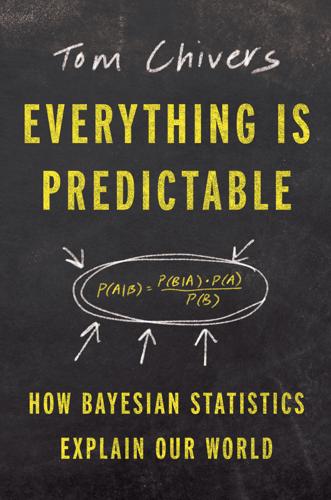
Everything Is Predictable: How Bayesian Statistics Explain Our World
by
Tom Chivers
Published 6 May 2024
But before we get into that, we need to turn to the history of the mathematics of chance, and what people were working on at that point. PASCAL AND FERMAT Traditionally, the story of the study of probability begins in French gambling houses in the mid-seventeenth century. But we can start it earlier than that. The Italian polymath Gerolamo Cardano had attempted to quantify the maths of dice gambling in the sixteenth century. What, for instance, would the odds be of rolling a six on four rolls of a die, or a double six on twenty-four rolls of a pair of dice? His working went like this. The probability of rolling a six is one in six, or 1/6, or about 17 percent.
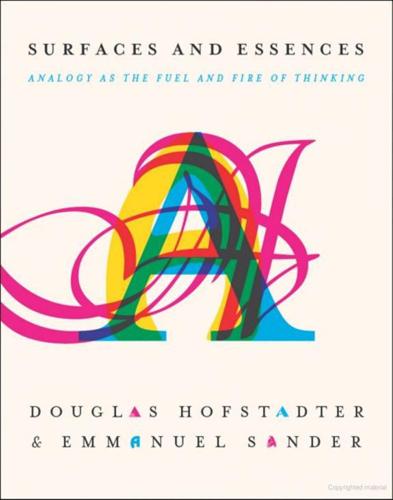
Surfaces and Essences
by
Douglas Hofstadter
and
Emmanuel Sander
Published 10 Sep 2012
This little guess, sliding a couple of times from two-ness to three-ness, and also once from three-ness to four-ness (which in itself comes from a mini-analogy: “4 is to 3 as 3 is to 2”) seems like an utter triviality, but without very simple-seeming conceptual slippages of this sort, which crop up absolutely everywhere in mathematics, it would be impossible to make any kind of progress at all. Let’s return to the story of the solution of “the” cubic equation (the reason for the quote marks will emerge shortly). It all took place in Italy — first in Bologna (Scipione del Ferro), and a bit later in Brescia (Niccolò Tartaglia) and Milan (Gerolamo Cardano). Del Ferro found a partial solution first but didn’t publish it; some twenty years later, Tartaglia found essentially the same partial solution; finally, Cardano generalized their findings and published them in a famous book called Ars Magna (“The Great Art”). The odd thing is that, as things were coming into focus, in order to list all the “different” solutions of the cubic equation, Cardano had to use thirteen chapters!
…
But the predilection of the human mind to make analogies left and right was far too strong for that to be the case. The discovery of the solution of the cubic by the Italians in the sixteenth century inspired European mathematicians to seek analogous solutions to equations having higher degrees than 3. In fact, Gerolamo Cardano himself, aided by Lodovico Ferrari, solved the quartic — the fourth-degree equation. Even though there was no geometric interpretation for an expression like “x4 ”, the purely formal analogy between the equation ax3 +bx2 + cx + d = 0 and its longer cousin ax4 + bx3 + cx2 + dx + e = 0 was so alluring to Cardano that he could not resist tackling the challenge.

Foucault's Pendulum
by
Umberto Eco
Published 15 Dec 1990
I had done the same with Lia: I had regulated desite out of homage to the Bride, and I had been rewarded in the depths of my loins; my seed had been blessed. But I was not to persevere. I was to be seduced by the beauty of Tiferet. TIFERET 64 To dream of living in a new and unknown city means imminent death. In fact, the dead live elsewhere, nor is it known where. —Gerolamo Cardano, Somniorum Synesiorum, Basel, 1562, 1, p. 58 While Gevurah is the Sefirah of awe and evil, Tiferet is the Sefirah of beauty and harmony. As Diotallevi said: It is the light of understanding, the tree of life; it is pleasure, hale appearance. It is the concord of Law and Freedom. And that year was for us the year of pleasure, of the joyful subversion of the great text of the universe, in which we celebrated the nuptials of Tradition and the Electronic Machine.

Artificial Intelligence: A Modern Approach
by
Stuart Russell
and
Peter Norvig
Published 14 Jul 2019
In 1879, Gottlob Frege (1848–1925) extended Boole’s logic to include objects and relations, creating the first-order logic that is used today.5 In addition to its central role in the early period of AI research, first-order logic motivated the work of Gödel and Turing that underpinned computation itself, as we explain below. The theory of probability can be seen as generalizing logic to situations with uncertain information—a consideration of great importance for AI. Gerolamo Cardano (1501–1576) first framed the idea of probability, describing it in terms of the possible outcomes of gambling events. In 1654, Blaise Pascal (1623–1662), in a letter to Pierre Fermat (1601–1665), showed how to predict the future of an unfinished gambling game and assign average payoffs to the gamblers.
…
Othello, also called Reversi, has a smaller search space than chess, but defining an evaluation function is difficult, because material advantage is not as important as mobility. Programs have been at superhuman level since 1997 (Buro, 2002). Backgammon, a game of chance, was analyzed mathematically by Gerolamo Cardano (1663), and taken up for computer play with the BKG program (Berliner, 1980b), which used a manually constructed evaluation function and searched only to depth 1. It was the first program to defeat a human world champion at a major game (Berliner, 1980a), although Berliner readily acknowledged that BKG was very lucky with the dice.